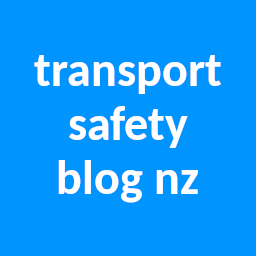TAIC has released a report RO-2021-102 about a fatal level crossing accident at Saunders Road, Marton. On 13 May 2021, a road marking truck was hit by a train approaching from the north, resulting in the death of the truck’s driver. The enquiry found that the company which was performing the road marking work at the level crossing did not have a PTE (Permit To Enter) from Kiwirail for the work. It turned out that the company was required to complete forms issued by the Manawatu District Council. The relevant form relating to the issue of road marking for the Council was a Traffic Management Plan which provided information to the contractor about how to manage traffic at various work sites, but did not include any information about traffic management at railway sites adjacent to railway crossings. The documentation also failed to identify that 20% of the locations in the contract fell within the rail corridor and therefore all these locations should have been conducted with a PTE from Kiwirail.
The issue that is becoming clear about railway crossing safety around the country is that councils routinely ignore or sideline the rail corridor as being of no relevance to them. This is highlighted strongly by the fact that councils control many intersections which have a railway crossing immediately to one side of them. These intersections are not addressed for this major safety concern despite the risks and problems that are created by having railway crossings too close to intersections.
A secondary consideration in this place that has some relevance, but is probably less relevant to this particular situation, is the limited visibility of approaching trains from the north at this crossing. The crossing is protected only by stop signs, and the view of trains from the north is restricted by curves in the track. It is implied in the report that the train would have been visible about eight seconds before it reached the crossing. The report argued that the truck should have been able to be moved off the crossing with only this eight second warning, but does not address the fact that a longer heavier truck may not have been able to do so in the case of having started across the track with no train seen approaching at the crossing because of the curves (not the situation in this case obviously).
There are also questions over the light weighting of traffic at the crossing being assessed in the safety risks, whether this is actually reasonable. TSBNZ questions that, because of the fact that the protection level is only stop signs. Bells and lights would give a much greater warning of the approaching train from further away, and thus mitigate the fact that the curves in the track would make it more difficult to see a train approaching from the north. As it stands, eight seconds is not much of a warning (for visual observation, and in this case 5.4 seconds of the train horn sounding) and could have still resulted in a near miss at this crossing. Whilst TSBNZ generally agrees with TAIC in reports in this case TSBNZ has to disagree with the rubber stamping of the level of protection required because it only takes one death on a crossing to show that the risk actually exists and is real. If the accident had involved a heavy commercial truck crossing the railway at this point, a reasonable scenario is that if a driver had stopped and had checked the track both ways without seeing an approaching train from the north, in the time needed to start his truck moving and take it over the crossing, it is entirely possible that the tail end of his truck could have been hit by the approaching train after failing to clear the crossing in time.
Furthermore, the question is why safety recommendations are represented to Waka Kotahi (NZTA) and not represented directly to road controlling authorities, in this case the Manawatu District Council. Since TAIC’s reports are public, publishing the information would help to bring further public pressure on councils to address level crossing safety.
